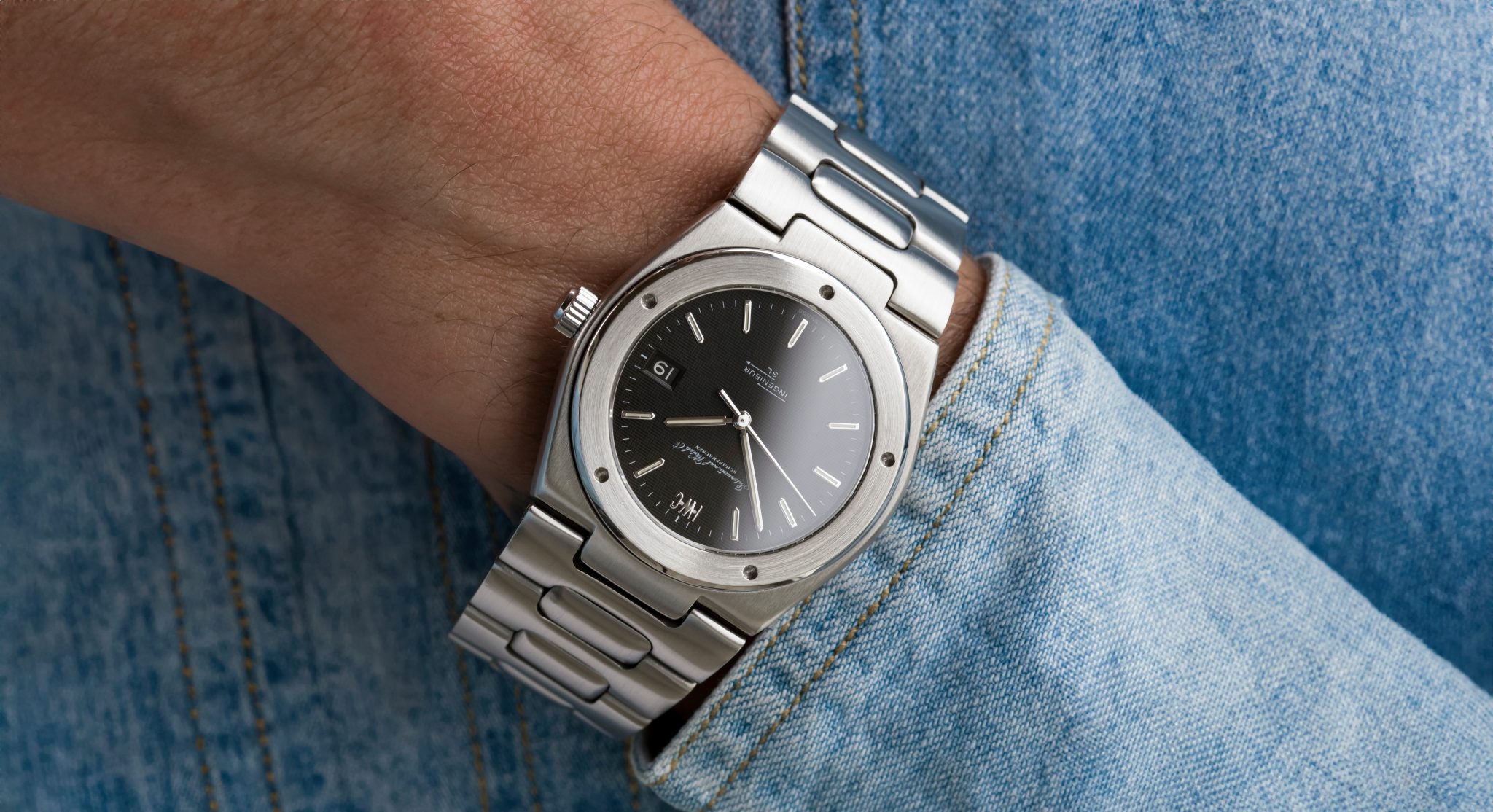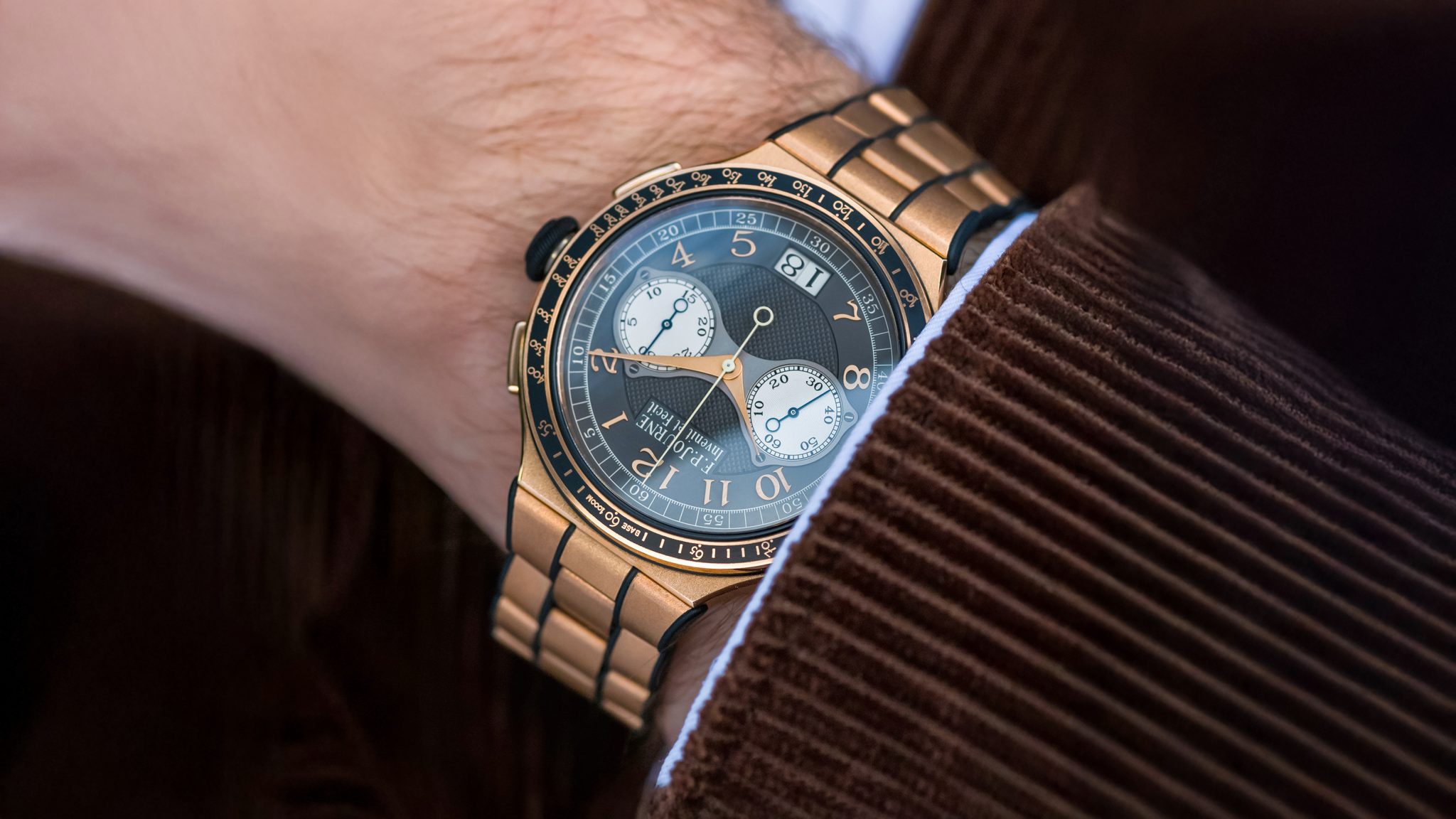
1832 IWC Ingenieur SL
The original Ingenieur has not been bettered. Released in the same year as the 3700 Nautilus, it is the overlooked third Genta album of the 1970s integrated steel sports splashdown. But unlike the 5402 or 3700, this was at its (iron) core an antimagnetic watch. And so it’s not really the exact same category, it’s trying to be a different thing: technical, teutonic steel. The result of that, ahem, ingenieuring, was a case with far more muscular design than the Nautilus, whatever that means. It’s broad shouldered, broadly overlooked, and bold with a chequered guilloché dial. But, in 1976, no one cared. In 1979, a 1019 Milgauss cost 725 USD. An 1832 Ingy was 2370 USD. It was serious dough.

As such, this ref. 1832 was produced in 543 examples, then 55 in its yellow gold sibling which goes by 9232 (one of the great overlooked refs). In these very early years, the 1832 was the only Ingenieur to feature a truly ‘in-house’ calibre, 8541 ES, with some amagnetic alloys and housed in an iron Faraday cage. This all summed to a 80K A/m resistance, or 1000 Gauss, with 120 water resistance. Interestingly, the calibre is is supported by small rubber shock-absorbers with a Pellaton winding system, both of which are aimed toward shock resistance. For its time, the 1832 was the ultimate beast on durability across many fronts. Unlike the JLC 920 used in the Royal Oak and Nautilus, the 1832 had a running centre seconds, just underscoring the sportiness it aims for despite the technical merits. I made the mistake on our podcast of inadvisably calling it a ‘Nautilus for men’, which doesn’t really land right, but you know what I mean. It’s a beast.


The 5402 was produced in 6050 examples, 3700 in roughly the same amount. This is about ten times as scarce as either, for what that’s worth to you. What’s more exciting to me about the 1832, though, is how no one can match it. Not even IWC. You’ll note, the new Ingenieur went out of its way to not advertise its magnetic resistance anywhere, because it was shamefully low. I also happen to adore the haphazard bezel hole grips, which land wherever they do by torque as the bezel was screwed down. And the dial is basket-weave guilloché, not stamped, modelled after German graph paper. If only Brad Pitt hadn’t worn one, it would’ve remained one of the greatest under-the-radar refs. with serious chops.

This example is really quite beautiful. These cases never had super sharp bevels, this is how they look in great condition. This example is from 1980, somewhat later in production. There’s a debate amongst watch people whether late production 1832 were ever sold with Swiss only dials and I tend to believe some were. However, objectively its possible or even likely this is a service dial so that should be noted. It’s either a late dial or possible service, that’s on a buyer to research really. The bracelet looks very tight and the watch comes with its full set, from a well-regarded Spanish retailer.








